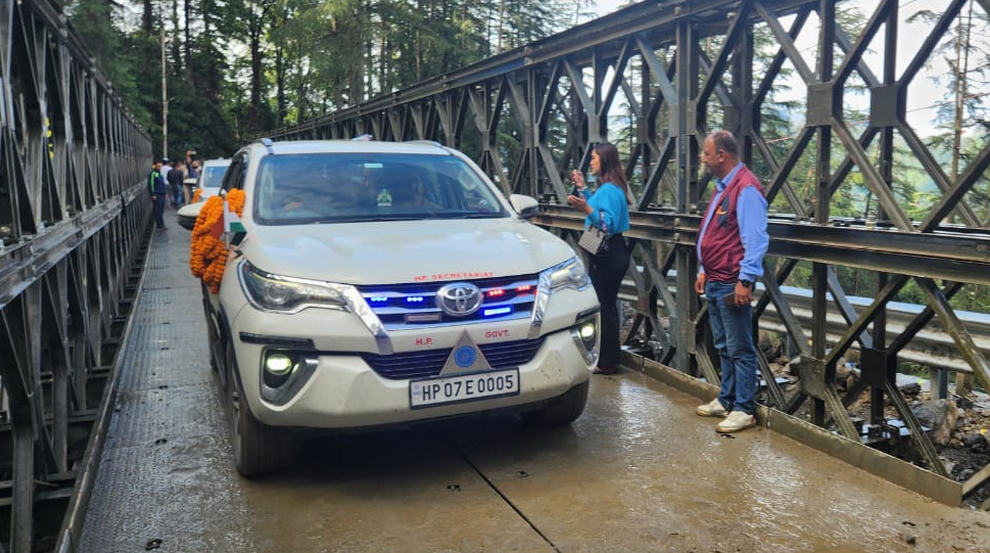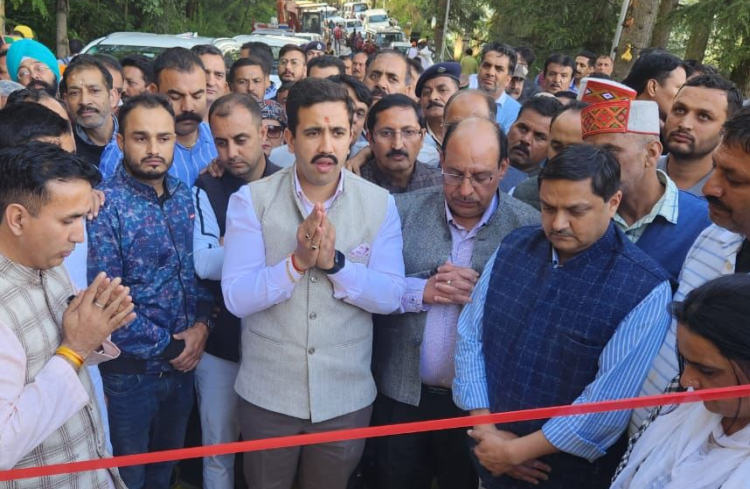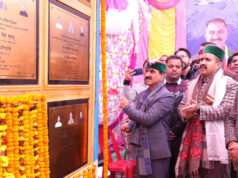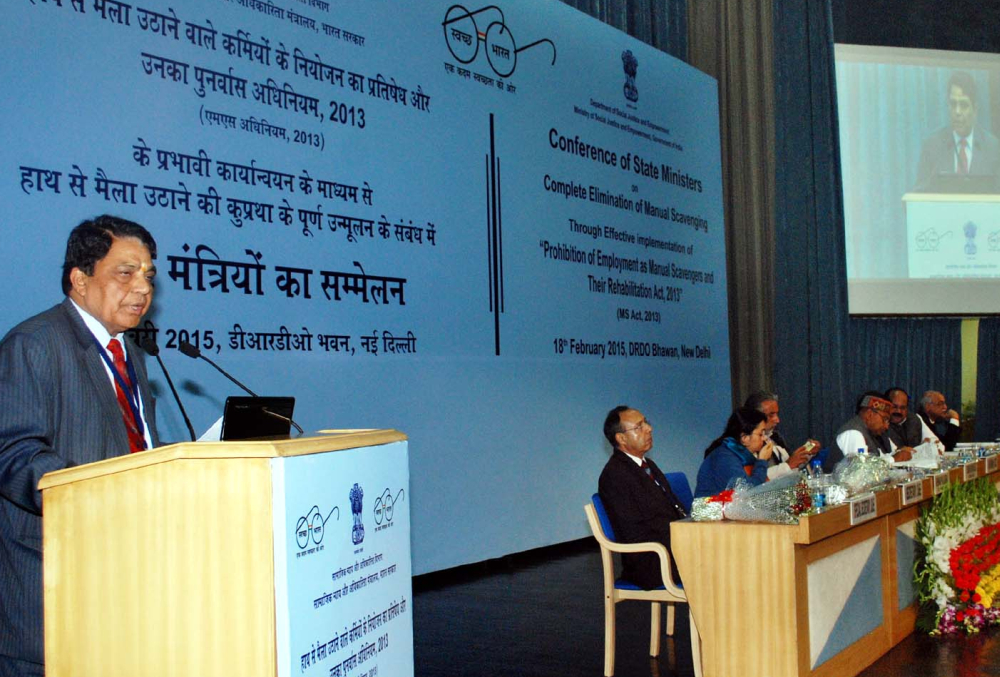
In a remarkable display of efficiency and dedication, the Shimla-Theog Road has been reopened for traffic as a bailey bridge was completed within an impressive record time. The construction of the bridge has brought much-needed relief to commuters and travellers, resolving the disruption caused by a sinking portion of the road due to heavy rains near Theog.
Vikramaditya Singh, the Minister of Public Works, proudly announced the successful completion of the Bailey Bridge and the restoration of traffic on the Shimla-Theog Road. The Minister, who personally inspected the work, expressed satisfaction with the project’s swift completion, honouring the commitment made to the people by ensuring the bridge was constructed within a record time of just six days.
The sinking portion of the road caused significant inconvenience and hardships for commuters travelling between Shimla and Theog. However, the relentless efforts of the Public Works Department (PWD) have now paid off, allowing the reopening of the road for traffic. Minister Singh lauded the PWD for their exceptional dedication and tireless work that contributed to the successful completion of the bridge within the ambitious timeframe.
During his inspection visit, Minister Singh also outlined the PWD’s plans for constructing a retaining wall in the affected area. This additional infrastructure will provide stability to the sinking portion of the road, ensuring a permanent solution to the issue and preventing any future disruptions.
To commemorate the completion of the bailey bridge and signify the restoration of traffic on the Shimla-Theog Road, Minister Singh conducted a formal inauguration ceremony. The completion of the bridge within such a short period showcases the government’s commitment to fulfilling promises and its ability to efficiently respond to the needs of the people.
The reopening of the Shimla-Theog Road has brought immense relief to commuters and locals who rely on this vital transportation route. With the bailey bridge now in place, the focus shifts towards the long-term stabilization of the affected area.














